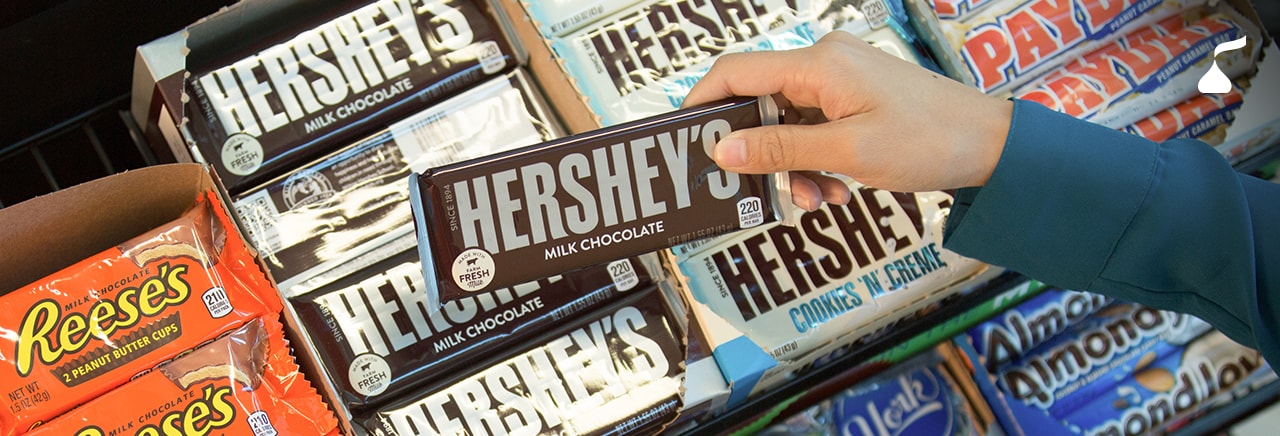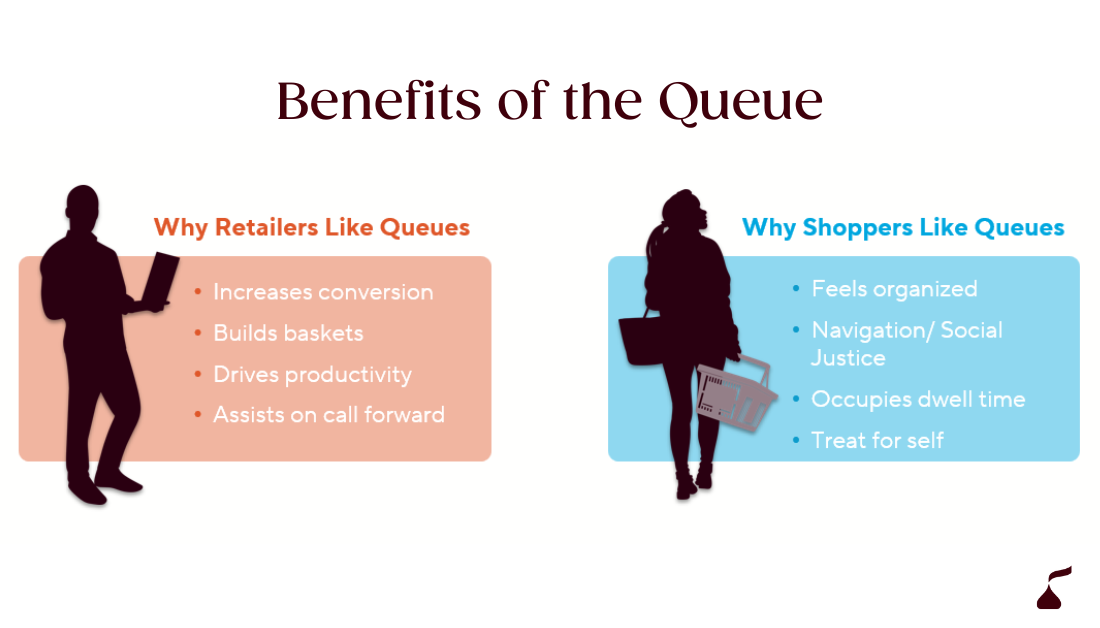What is a queue worth? Hershey is answering that question—and then designing it
Key Takeaways:
- Merchandising solutions at self-checkout can help retailers avoid losing sales
Hershey researched how queues impact front-end sales and what qualities shoppers prefer in a merchandise-lined queue
Now, Hershey is working with retail partners to design these optimal queues to best fit the retailer’s space and elevate the shopper's experience
August 10, 2023
Merchandise queues for self-checkout areas come in all shapes and sizes. Some twist and turn, while others are straight. Some have multiple vs. single-entry points for shoppers. Some queues are wide and short, and some are skinny and long. And many stores have entirely opted out of product-lined queues, entrusting customers to create their own sense of order.
So, what’s good or bad? Are all queues created equal?
Our team decided to find out. The COVID-19 pandemic has markedly changed shopper behavior, with shoppers prioritizing safety and efficiency. In response, retailers began remodeling stores, leaning heavily toward technology and self-checkout. They saw their front-end sales drop as they replaced assisted lanes with self-checkout. We saw an opportunity to step in and not only understand why the sales were dropping but to offer solutions and even customized designs that could boost them. It’s been a fascinating journey, and we’re just getting started.
Uncovering the optimal queue
Well-designed queues are beneficial to retailers and shoppers alike. On the retail side, queues can increase front-end sales significantly; for shoppers, queues can add a feeling of organization by helping with navigation and giving shoppers something to focus on while waiting in line.
To learn what works best, we spent countless hours observing shoppers in self-checkout areas in different retail environments including small and large format, grocery, mass market and dollar. We even outfitted some shoppers with eye-tracking glasses and then talked to them about their experience.
The results surprised us. For starters, we found that the increase in self-checkout means an increase in speed—very few shoppers even experience a line at self-checkout—allowing for very little of what we call “forced dwell” time. Our initial concern was that shoppers will not engage with products if a line never forms. But we learned that in well-designed queues, shoppers want to dwell and treat themselves. An optimal queue also invites a sense of calm, allows for social justice and the ability to peruse the merchandise.
After compiling all the insights from our in-store research, we identified six queue design principles that – when executed properly – have been proven to significantly increase conversion within a queue and enhance shopper satisfaction. The principles range from sight lines to the optimal shape and size.
From research to reality
Leveraging the six principles and analytics, we are partnering with retailers to co-create and optimize queues to deliver shopper-driven solutions that best fit retailers’ spaces to maximize sales and enhance shopper satisfaction.
We know that shopping can be a stressful chore. That’s nothing new. Through our research, insights and design capabilities, we’re doing what we can to better understand and minimize those pain points, all while ensuring shoppers can access a well-deserved treat from a thoughtfully designed queue at the end of a shopping trip.
To learn more about Hershey’s new queue principles and capabilities to help you design the optimal queue, please contact your Hershey Customer Sales Executive or Hershey Category Management representative.
Hershey’s queue research is ongoing. Check back for insights on where items should be placed in a queue to increase conversion.
Want More Hershey?
Sign up for our Newsletter.

